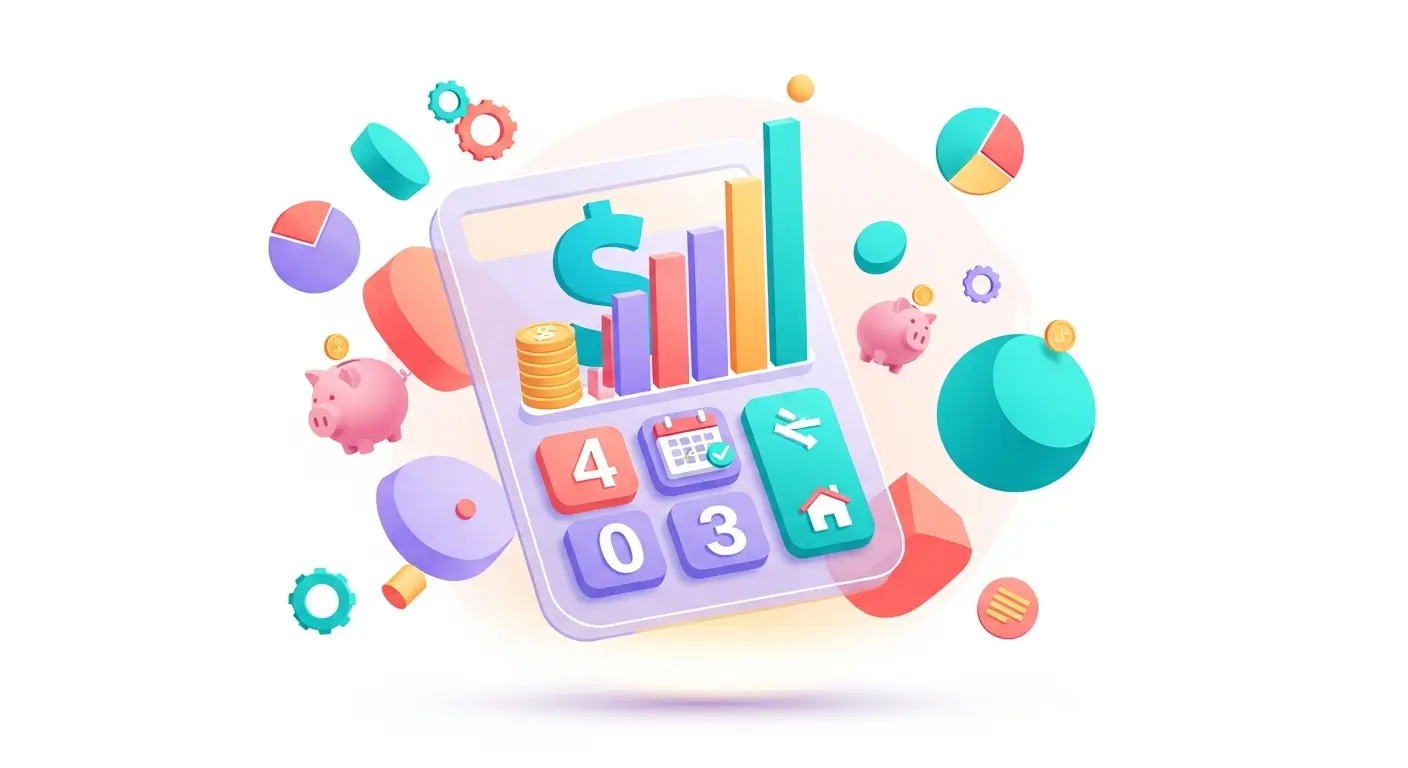💰 Loan Calculator
Calculate Loan Payments, Interest & Amortization
A loan is a contract between a borrower and a lender in which the borrower receives an amount of money (principal) that they are obligated to pay back in the future. Most loans can be categorized into one of three categories:
- Amortized Loan: Fixed payments paid periodically until loan maturity
- Deferred Payment Loan: Single lump sum paid at loan maturity
- Bond: Predetermined lump sum paid at loan maturity (the face or par value of a bond)
💡 Tip: Use this calculator for basic calculations of common loan types such as mortgages, auto loans, student loans, or personal loans, or click the links for more detail on each.
Use this calculator for basic calculations of common loan types such as mortgages, auto loans, student loans, or personal loans, or click the links for more detail on each.
💻 Loan Details
✅ Results
Use this calculator to compute how much you will owe at the end of the loan period by making no payments until the maturity date.
💻 Loan Details
✅ Results
Use this calculator to compute the initial value of a bond/loan based on a predetermined face value to be paid back at bond/loan maturity.
💻 Loan Details
✅ Results
📘 What is a Loan Calculator?
A Loan Calculator is a comprehensive financial tool designed to help borrowers and lenders understand the financial implications of different loan types. This calculator specifically handles three main categories of loans: amortized loans (where you make fixed periodic payments), deferred payment loans (where you pay a lump sum at maturity), and bonds (which have a predetermined face value). By inputting key loan parameters such as the principal amount, interest rate, loan term, and compounding frequency, the calculator automatically computes payment schedules, total interest paid, and other critical loan metrics.
Whether you're considering a mortgage, auto loan, student loan, or personal loan, this calculator provides essential insights into your borrowing costs and helps you make informed financial decisions. The calculator supports multiple compounding frequencies and payment schedules, making it adaptable to various real-world lending scenarios.
🔢 Formulas & Methodology
Amortized Loan Calculations
An amortized loan involves making fixed periodic payments until the loan is fully repaid. The monthly payment is calculated using the standard amortization formula:
Where:
- M = Monthly payment amount
- P = Principal loan amount
- r = Monthly interest rate (annual rate ÷ 12 ÷ 100)
- n = Total number of payments
The total interest is the difference between all payments made and the original principal.
This formula shows how much principal remains after making k payments.
Deferred Payment Loan Calculations
A deferred payment loan involves no periodic payments; instead, the entire amount (principal plus accumulated interest) is paid at maturity:
Where:
- A = Amount due at maturity
- P = Principal loan amount
- r = Annual interest rate (as a decimal)
- n = Compounding frequency per year (1 for annual, 2 for semi-annual, 4 for quarterly, 12 for monthly)
- t = Time in years
Bond Calculations
A bond has a predetermined face value (maturity value) that will be paid at maturity. The initial loan amount (present value) is calculated by discounting the face value:
Where:
- PV = Present value (initial loan amount)
- FV = Face value (predetermined due amount)
- r = Annual interest rate (as a decimal)
- n = Compounding frequency per year
- t = Time in years
This represents the total discount (or premium if negative).
📖 How to Use This Loan Calculator
Step-by-Step Guide for Amortized Loans
Step 1: Select the Loan Type
Click on the "Amortized Loan" tab at the top if it's not already selected. This is the most common loan type for mortgages, auto loans, and personal loans.
Step 2: Enter the Loan Amount
Input the total principal amount you're borrowing (e.g., $100,000 for a mortgage or $25,000 for a car loan).
Step 3: Specify the Loan Term
Enter the loan term in years and months. For example, a 30-year mortgage would be "30 years" and "0 months". A 5-year car loan with an additional 3 months would be "5 years" and "3 months".
Step 4: Enter the Interest Rate
Input the annual percentage rate (APR). This is typically found in your loan offer documents. For example, a typical mortgage rate might be 6%, while credit card rates could be 20%+.
Step 5: Select Compounding Frequency
Choose how often interest is compounded (Monthly, Quarterly, Semi-Annual, or Annually). Most consumer loans compound monthly (APR - Annual Percentage Rate).
Step 6: Choose Payment Frequency
Select how often you make payments (Monthly, Quarterly, Semi-Annual, or Annually). Most borrowers pay monthly.
Step 7: Click Calculate
Press the green "Calculate" button to see your results, including monthly payment, total payments, and total interest.
Step 8: Review the Results
See your monthly payment, total amount you'll pay, total interest, and a visual breakdown of principal vs interest. Click "View Amortization Table" to see a detailed month-by-month payment schedule.
Using Deferred Payment & Bond Calculators
The process is similar for deferred payment loans and bonds. Simply enter the loan amount (or face value for bonds), term, interest rate, and compounding frequency. The calculator will show you how much you'll owe at maturity.
